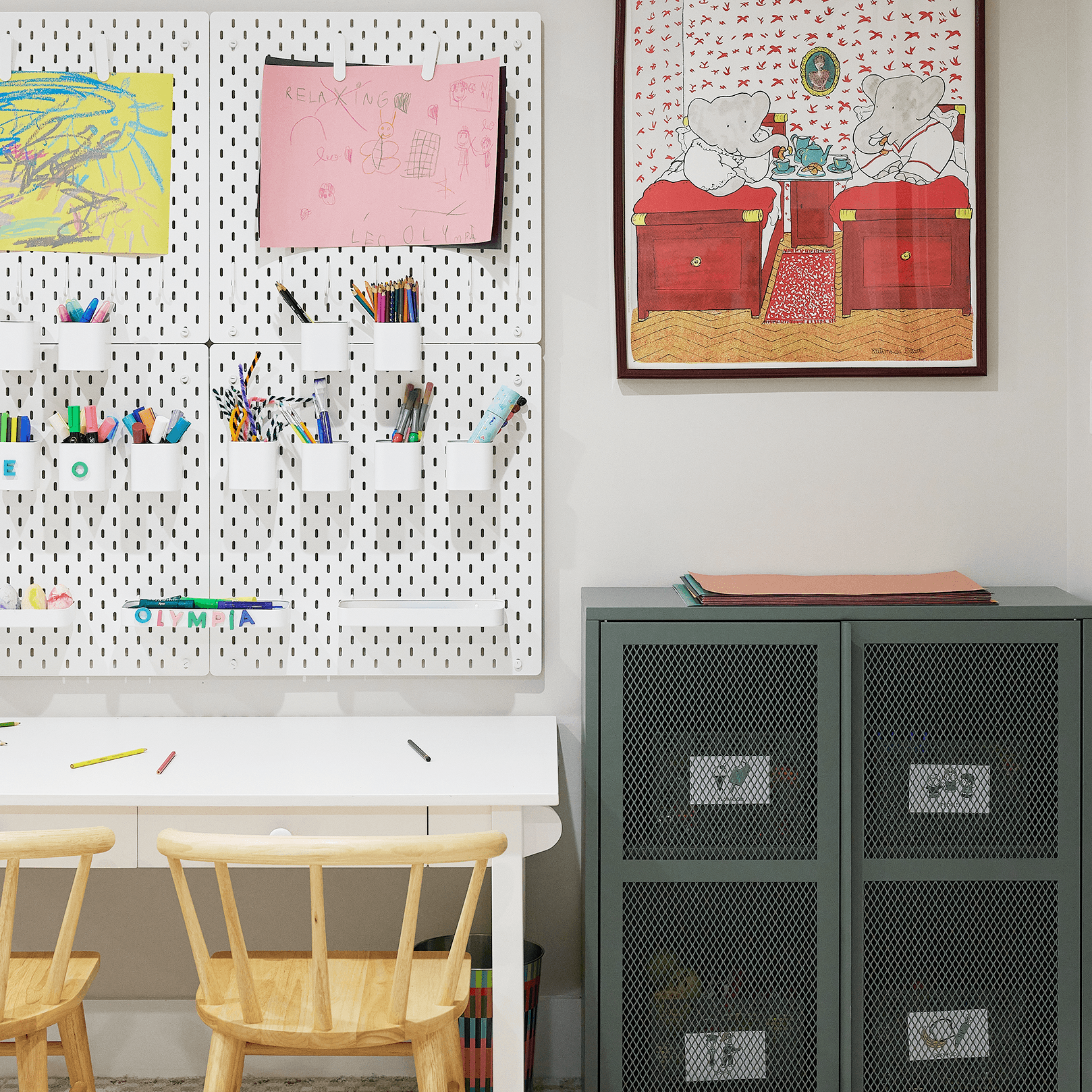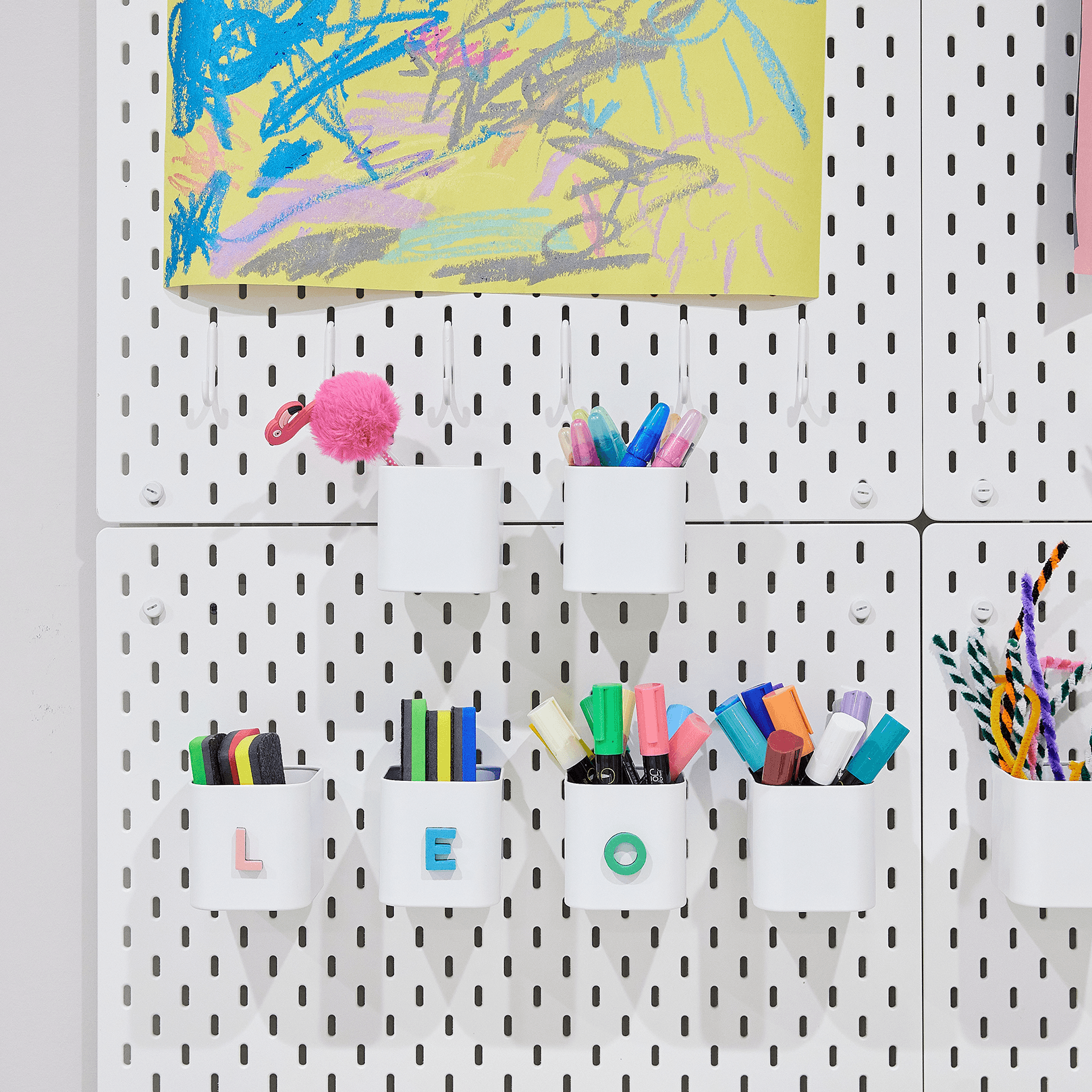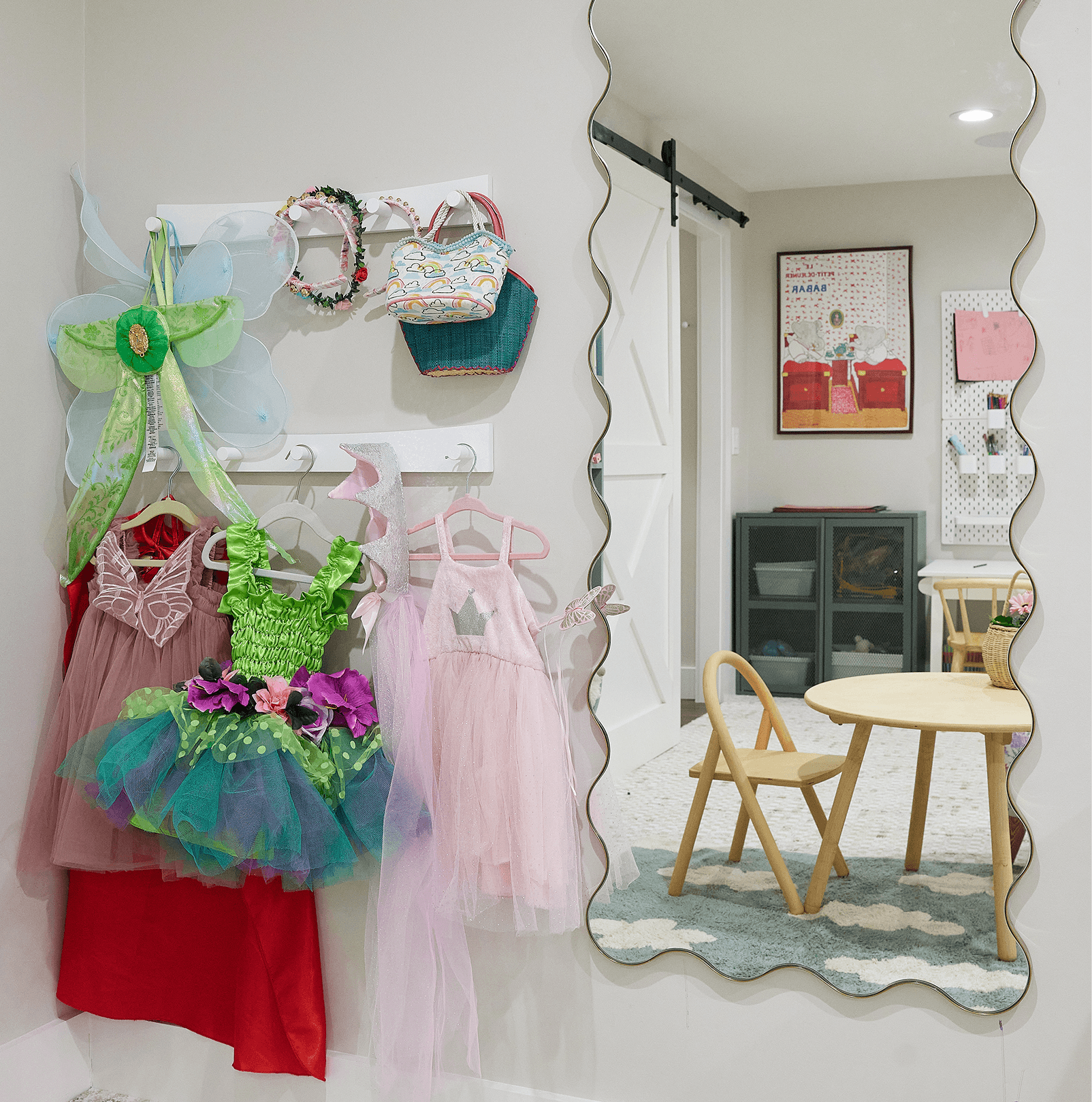
Little World of Interiors
Ready for a Playroom Refresh?
Early childhood expert and award winning designer, Courtney Gault of Greenwich Play, shares her tips on how to create the DIY (with a little help) playroom of your dreams.
- Written By
- Phoebe de Croisset
When I moved to the suburbs from NYC last year, one of the first thoughts I had was: finally! Enough space for an actual play room! I couldn’t wait to send my kids off for (what I imagined would be) hours of independent play, immersed in dress-up or art projects, building magnatile castles and tumbling around a carpeted expanse free from our delicate mid-century modern furniture. Alas, a few weeks into life in the suburbs and I realized that square footage alone doesn’t translate into an actual playroom. Barbie clothes and building blocks seemed to burst from the seams, bins overflowed with trucks and dolls and teeny tiny legos. My dream space had become an organizational nightmare. Needless to say, my children were far from independent play; I needed help. That’s when I called on early childhood expert and award winning designer, Courtney Gault. Fifteen minutes into her in-home visit, she had identified 5 play spaces for my playroom, told me where they should go, what should be in them, and why. We’re sharing her tips here.
Art Space
- Ensure the table and chairs are the appropriate size. Nothing will end an art session faster than being uncomfortable.
- Make some materials easily accessible while leaving other more messy items in a location that might require adult assistance.
- Provide a dedicated space to display artwork. Encouraging your tiny artist to showcase their masterpieces will keep the creativity coming.




Pretend Play
- Choose a designated area for pretend play, whether a corner in the living room or an entire playroom. You want it to be clear that pretend play happens here.
- Gather a trove of props and costumes. Think old clothes, hats, scarves, jewelry, phones, keyboards, anything that can be repurposed into imaginative play materials!
- Avoid hanging costumes on hangers and keep things organized by using hooks for costumes and hats, and bins for play food and other items.




Reading Nook
- Create a book nook using a comfy chair, a window seat, or a dedicated tent. Cozy blankets, pillows, and a fluffy rug always help make the spot more inviting.
- Ensure age-appropriate books are easily accessible in a library cart or on reachable shelves.
- Add a few twinkle lights or book-themed posters to create a captivating atmosphere.
Builder’s Corner
- All builders need a strong foundation. Ensure your builder’s corner has a flat, hard surface that supports all types of creations.
- Using a label your child can understand will help facilitate purposeful interactions, allowing the focus to be more on building and less on finding the things needed.
- Provide not only building materials but also materials that would extend the play. Characters, cars, and animals are all great additions to the builder’s corner.
Gross Motor
- The gross motor zone of the playroom invites active play, so pick a spot where your mini daredevils can safely unleash their energy (crash pads strongly encouraged!).
- Invest in kid-friendly gym equipment like mini trampolines, climbing walls, and balance beams. - You want to offer equipment that is age-appropriate but also challenging so that they have something to grow into.




When you provide a child with a space at home that is intentionally designed just for them, they have the opportunity to explore their ideas and practice skills they are honing in a thoughtful way. Purposeful play doesn’t organically transpire because we want it to (although that would be nice!). It also doesn’t have to be as elaborate as what you see here. A clearly defined corner of a room that is well organized with developmentally appropriate materials is equally successful, if not more.
Courtney Gault
Courtney Gault is an early childhood expert and award-winning designer. She is also the founder of Greenwich Play, a groundbreaking family-focused design firm specializing in chic, purposeful play spaces. She combines style, expertise, and function to help families create areas of their homes that support healthy development in children.
